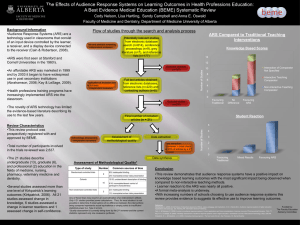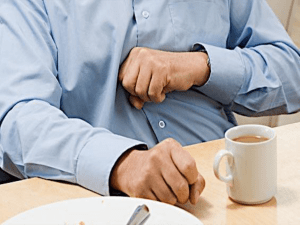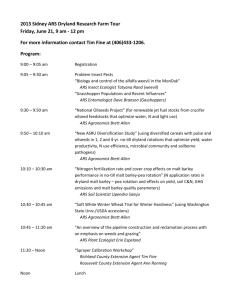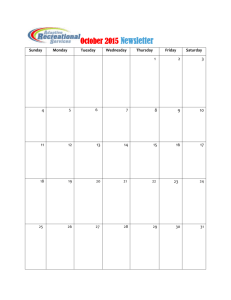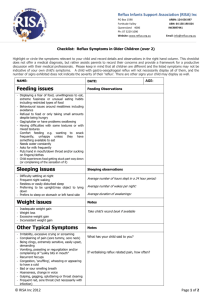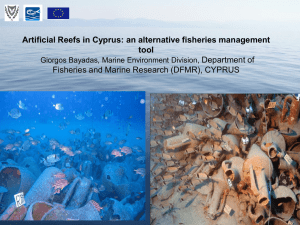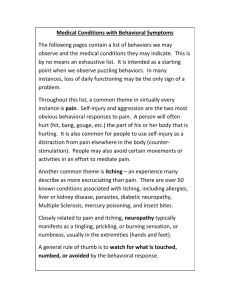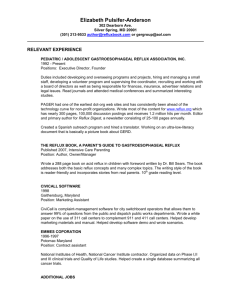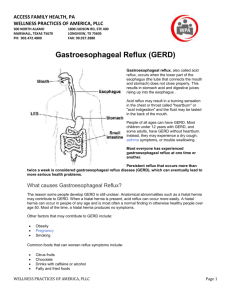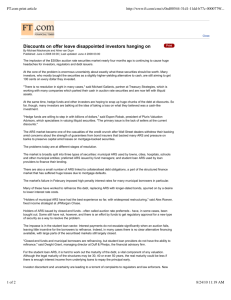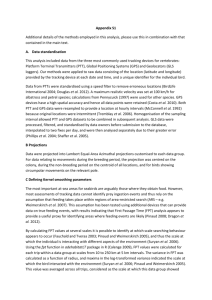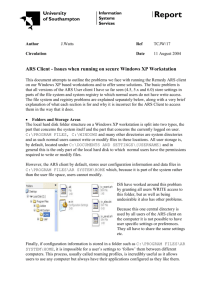Laparoscopic Thal fundoplication in children: A prospective
advertisement
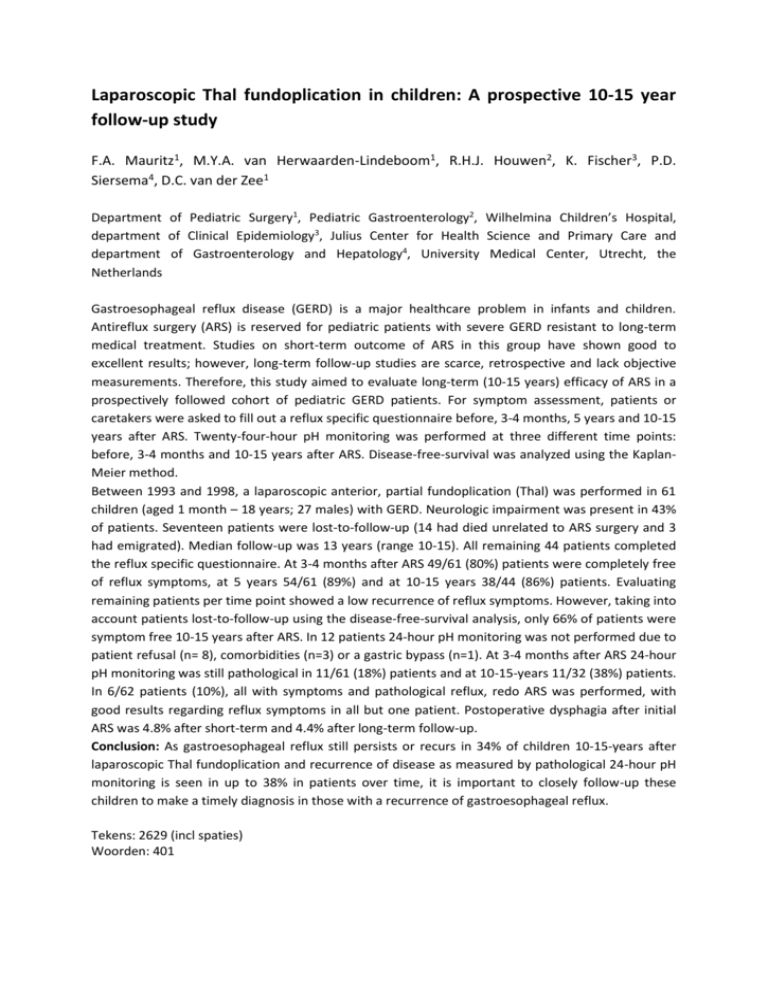
Laparoscopic Thal fundoplication in children: A prospective 10-15 year follow-up study F.A. Mauritz1, M.Y.A. van Herwaarden-Lindeboom1, R.H.J. Houwen2, K. Fischer3, P.D. Siersema4, D.C. van der Zee1 Department of Pediatric Surgery1, Pediatric Gastroenterology2, Wilhelmina Children’s Hospital, department of Clinical Epidemiology3, Julius Center for Health Science and Primary Care and department of Gastroenterology and Hepatology4, University Medical Center, Utrecht, the Netherlands Gastroesophageal reflux disease (GERD) is a major healthcare problem in infants and children. Antireflux surgery (ARS) is reserved for pediatric patients with severe GERD resistant to long-term medical treatment. Studies on short-term outcome of ARS in this group have shown good to excellent results; however, long-term follow-up studies are scarce, retrospective and lack objective measurements. Therefore, this study aimed to evaluate long-term (10-15 years) efficacy of ARS in a prospectively followed cohort of pediatric GERD patients. For symptom assessment, patients or caretakers were asked to fill out a reflux specific questionnaire before, 3-4 months, 5 years and 10-15 years after ARS. Twenty-four-hour pH monitoring was performed at three different time points: before, 3-4 months and 10-15 years after ARS. Disease-free-survival was analyzed using the KaplanMeier method. Between 1993 and 1998, a laparoscopic anterior, partial fundoplication (Thal) was performed in 61 children (aged 1 month – 18 years; 27 males) with GERD. Neurologic impairment was present in 43% of patients. Seventeen patients were lost-to-follow-up (14 had died unrelated to ARS surgery and 3 had emigrated). Median follow-up was 13 years (range 10-15). All remaining 44 patients completed the reflux specific questionnaire. At 3-4 months after ARS 49/61 (80%) patients were completely free of reflux symptoms, at 5 years 54/61 (89%) and at 10-15 years 38/44 (86%) patients. Evaluating remaining patients per time point showed a low recurrence of reflux symptoms. However, taking into account patients lost-to-follow-up using the disease-free-survival analysis, only 66% of patients were symptom free 10-15 years after ARS. In 12 patients 24-hour pH monitoring was not performed due to patient refusal (n= 8), comorbidities (n=3) or a gastric bypass (n=1). At 3-4 months after ARS 24-hour pH monitoring was still pathological in 11/61 (18%) patients and at 10-15-years 11/32 (38%) patients. In 6/62 patients (10%), all with symptoms and pathological reflux, redo ARS was performed, with good results regarding reflux symptoms in all but one patient. Postoperative dysphagia after initial ARS was 4.8% after short-term and 4.4% after long-term follow-up. Conclusion: As gastroesophageal reflux still persists or recurs in 34% of children 10-15-years after laparoscopic Thal fundoplication and recurrence of disease as measured by pathological 24-hour pH monitoring is seen in up to 38% in patients over time, it is important to closely follow-up these children to make a timely diagnosis in those with a recurrence of gastroesophageal reflux. Tekens: 2629 (incl spaties) Woorden: 401
